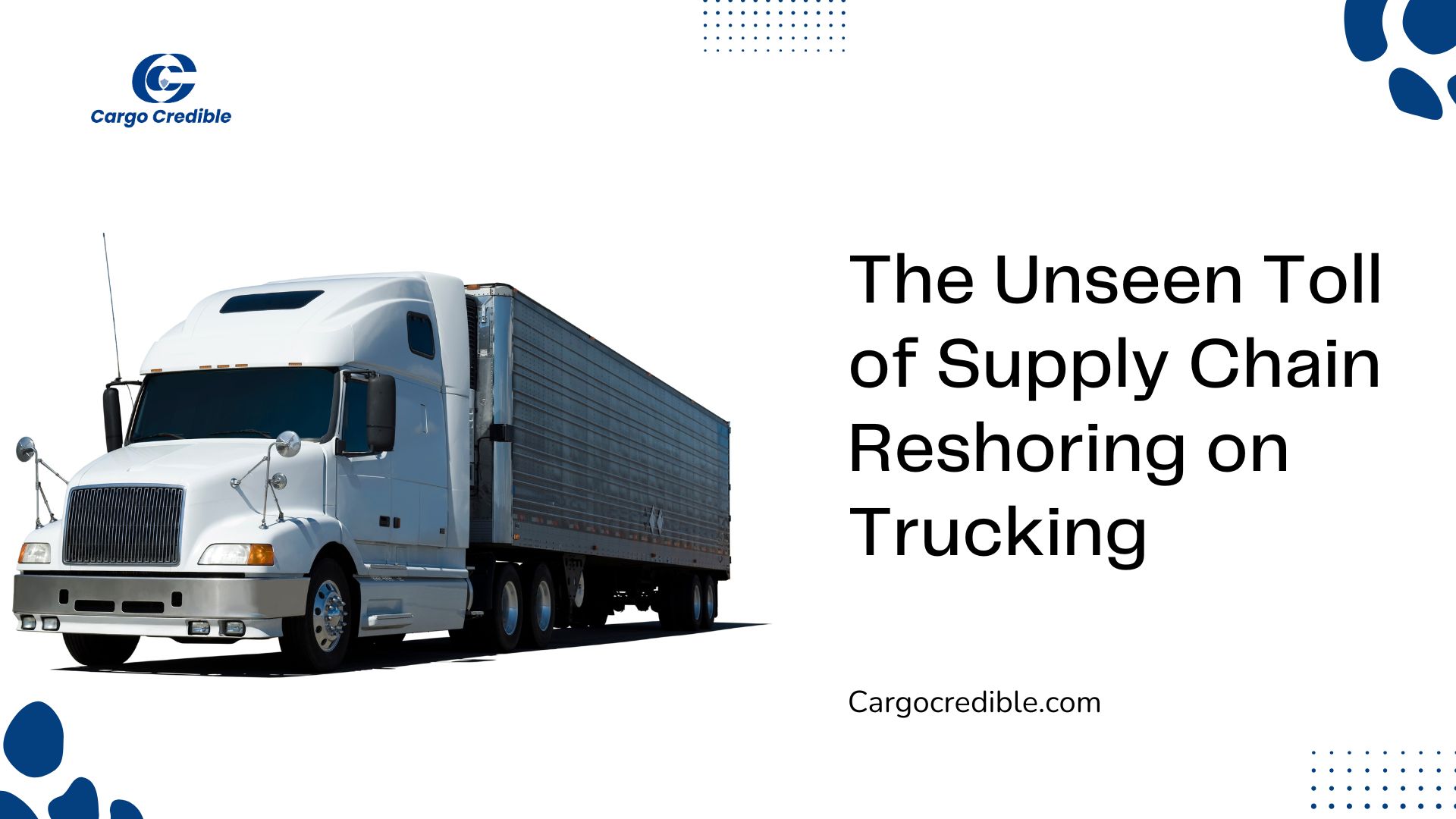The Unseen Toll of Supply Chain Reshoring on Trucking

Welcome back to our Week 2 exploration of the quiet yet powerful forces reshaping the trucking industry. We’ve covered insurance and regulatory pressures. Now, we shed light on a colossal shift altering the flow of freight—the massive change in where products are made and how they move.
Why Reshoring Matters
In recent years, many companies have chosen to bring production closer to home—a trend called reshoring (bringing factories back to the U.S.) or nearshoring (moving production to nearby countries like Mexico or Canada). This shift isn’t just about convenience or patriotism; it fundamentally transforms freight movements and trucking operations.
What’s Really Changing?
From Sea Ports to Regional Plants
Once, most freight traveled long distances from overseas ports such as Los Angeles or Savannah. Now, production is cropping up inland—in Texas, the Midwest, and border states—moving freight over shorter distances but more frequently. This creates a surge in cross-border trucking and new inland distribution hubs.
New Supply Routes Bring New Challenges
Highways that were once quiet traffic arteries are now busy routes. Key border crossings like Laredo, El Paso, and Otay Mesa face record congestion and delays due to customs inspections and increased inspection requirements. Truckers face more downtime waiting in lines and dealing with paperwork.
Shorter Hauls, Shrinking Profit Margins
Reshoring means long-haul truck trips are breaking into multiple short hauls between factories, warehouses, and shops. Trucking companies, especially small operators, built their business model on predictable, longer routes. More stops and shorter distances often bring lower earnings per mile and more logistical complexity.
Warehousing Strains
With more domestic manufacturing, demand for storage grows. But warehouse space is limited and costly. This leads to longer wait times for loading and unloading, increasing driver idle time and operational expenses.
The Hidden Financial Pressures
Insurance Cost Increases
New freight patterns create different risks. Insurance policies designed for fixed port-to-distribution routes must now cover shorter, diverse local trips, often raising premiums—cutting into tight margins.
Increasing Regulatory Complexity
Transporting freight closer to home means navigating a patchwork of local, state, and federal regulations: emissions, weight limits, and licensing vary regionally. Compliance becomes a costly, time-consuming burden on fleets.
Financing Challenges
The unpredictable nature of reshored freight makes lenders wary. Fleet owners may face higher loan hurdles and interest rates since traditional financing models rely on steady, long-haul routes as risk indicators.
The Policy Mismatch Problem
Government incentives have pushed manufacturers to reshore or nearshore production without matching investments in logistics infrastructure. Roads, bridges, and border facilities near new manufacturing hubs often lag behind growing freight volumes. The trucking industry, therefore, handles the heavy burden of this gap, adapting on the fly to underdeveloped infrastructure.
Who Gains—and Who Struggles?
- Regional Carriers get a boost as short-haul routes multiply.
- Tech-Savvy Fleets employing route optimization, telematics, and flexible capacity thrive.
- Long-Haul Carriers and Owner-Operators face fragmentation and financial strain from changing routes, insurance, and equipment needs.
Freight Map in Flux
- Major ports such as Los Angeles and Savannah see declines in truck volumes.
- Border states like Texas and Arizona become hotspots but face serious infrastructure pressures.
- Midwest hubs like Chicago and Columbus regain importance as manufacturing centers arise nearby.
These shifts represent a tectonic change under the logistics industry’s surface.
Why It’s Called “The Unseen Toll”
While the public celebrates the reshoring of jobs, the trucking industry quietly absorbs:
- New freight routes without adequate infrastructure support
- Higher insurance, compliance, and operational costs amid shrinking margins
- A complex web of regulations and financing difficulties
Truckers and carriers act as shock absorbers—the unseen foundation that keeps reshoring moving forward.
What Fleets Must Do
To survive and thrive in this evolving freight landscape, trucking companies should:
- Rethink Route Strategy: Build flexibility for shorter, fragmented hauls.
- Strengthen Financial Planning: Adapt cash flow to fluctuating, less predictable routes.
- Review Insurance: Match policies to new operational risks.
- Deploy Smart Tech: Optimize routing, reduce idle time, and track shipments in real time.
- Forge Strategic Partnerships: Collaborate closely with reshored manufacturers to secure ongoing freight.
Reshoring is more than a manufacturing shift. It’s a logistics transformation placing trucking front and center. For reshoring’s promise to be fulfilled, we must recognize and support the trucking industry’s role as the backbone of this new supply chain reality. Without strong, adaptable trucking fleets, the reshored economy’s supply lines could stall—the true, hidden toll of this global game changer.
Comments (0)
- No comments yet.